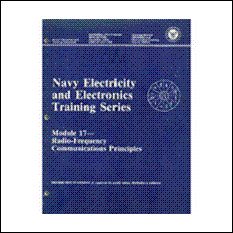Semiconductor LEDs
SEMICONDUCTOR LIGHT EMITTING DIODES AND LASER DIODES
Semiconductor LEDs emit incoherent light. Spontaneous emission of light in semiconductor LEDs produces light waves that lack a fixed-phase relationship. Light waves that lack a fixed-phase relationship are referred to as incoherent light. Spontaneous emission of light is discussed in more detail later in this section.
The use of Light emitting diodes in single mode systems is severely limited because they emit unfocused incoherent light. Even light emitting diodes developed for single mode systems are unable to launch sufficient optical power into single mode fibers for many applications. Semiconductor LEDs are the preferred optical source for multimode systems because they can launch sufficient power at a lower cost than semiconductor LDs.
Semiconductor LDs emit coherent light. LDs produce light waves with a fixed-phase relationship (both spatial and temporal) between points on the electromagnetic wave. Light waves having a fixed phase relationship are referred to as coherent light. Stimulated emission of light is discussed later in this section. Since LDs emit more focused light than semiconductor LEDs, they are able to launch optical power into both single mode and multimode optical fibers. However, LDs are usually used only in single mode fiber systems because they require more complex driver circuitry and cost more than light emitting diodes.
Optical power produced by optical sources can range from microwatts (ÿW) for light emitting diodes to tens of milliwatts (mW) for semiconductor LDs. However, it is not possible to effectively couple all the available optical power into the optical fiber for transmission.
The amount of optical power coupled into the fiber is the relevant optical power. It depends on the following factors:
· The angles over which the light is emitted
· The size of the source's light-emitting area relative to the fiber core size
· The alignment of the source and fiber
· The coupling characteristics of the fiber (such as the NA and the refractive index profile)
Typically, semiconductor lasers emit light spread out over an angle of 10 to 15 degrees. Semiconductor LEDs emit light spread out at even larger angles. Coupling losses of several decibels can easily occur when coupling light from an optical source to a fiber, especially with light emitting diodes.
Source-to-fiber coupling efficiency is a measure of the relevant optical power. The coupling efficiency depends on the type of fiber that is attached to the optical source. Coupling efficiency also depends on the coupling technique. Source-to-fiber coupling involves centering a flat fiber-end face over the emitting region of the light source. If the fiber end face is directly placed over the source emitting region, it is referred to as butt coupling. If the source's output light pattern is larger than the fiber's acceptance pattern, source-to-fiber coupling efficiency may be improved by placing a small lens between the source and fiber. Lensing schemes improve coupling efficiency when coupling both light emitting diodes and LDs to optical fibers.
SEMICONDUCTOR MATERIAL AND DEVICE OPERATING PRINCIPLES
Understanding optical emission in semiconductor lasers and LEDs requires knowledge of semiconductor material and device properties. Providing a complete description of semiconductorproperties is beyond the scope of this introductory manual. In this chapter we only discuss the general properties of semi conductor LEDs and LDs.
Semiconductor sources are diodes, with all characteristics of typical of diodes. However, their construction includes a special layer, called the active layer, which emits photons (light particles) when a current passes through the layer. The particular properties of the semiconductor are determined by thematerials used and the layering of the materials within the semiconductor. Silicon (Si) and gallium arsenide (GaAs) are the two most common semiconductor materials used in electronic and electro-optic devices. In some cases other elements, such as aluminum (Al), indium (In) and phosphorus (P), are addedto the base semiconductor material to modify the semiconductor properties. These elements are called dopants.
Current flowing through a semiconductor optical source causes it to produce light. An in-depth description of either of the two processes by which this occurs is beyond the scope of this module. However, we discuss elementary descriptions in the following paragraphs.
Semiconductor LEDs generally produce light through spontaneous emission when a current is passed through them. Spontaneous emission is the random generation of photons within the active layer of the LED. The emitted photons move in random directions. Only a certain percentage of the photons exit the semiconductor and are coupled into the fiber. Many of the photons are absorbed by the LED materials and the energy dissipated as heat. This process causes the light output from an LED to be incoherent, have a broad spectral width, and have a wide output pattern.
Laser diodes are much more complex than semiconductor LEDs. Laser is an acronym for light amplification by the stimulated emission of radiation. Laser diodes produce light through stimulated emission when a current is passed through them. Stimulated emission describes how light is produced in any type of laser. In the laser diode, photons, initially produced by spontaneous emission interact with the laser material to produce additional photons. This process occurs within the active area of the diode called the laser cavity. The process does not affect the original photon. The stimulated photon has many of the same properties (wavelength, direction, phase) as the original photon.
As with the LED, not all of the photons produced are emitted from the laser diode. Some of the photons are absorbed and the energy dissipated as heat. The emission process and the physicalcharacteristics of the diode cause the light output to be coherent, have a narrow spectral width, and have a narrow output pattern.
It is important to note that in both LED and laser diodes all of the electrical energy is not converted into optical energy. A substantial portion is converted to heat. Different LED and laser diode structures convert differing amounts of electrical energy into optical energy.















